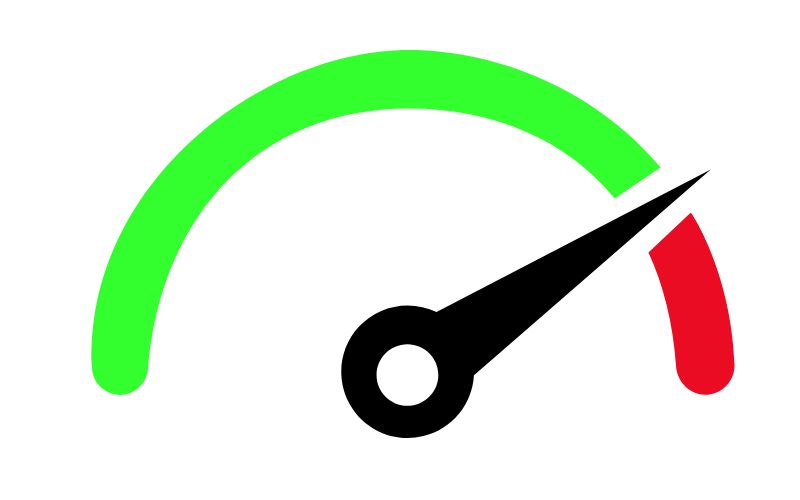Your website’s speed plays a crucial role in delivering a positive user experience. In today’s fast-paced digital world, users have little patience for slow-loading websites. They expect instant access to information, seamless navigation, and quick interactions. If your website takes too long to load, users are more likely to abandon it and turn to your competitors instead. Therefore, optimizing your website’s speed should be a top priority to ensure a satisfying user experience and keep your visitors engaged.
Table of Contents
ToggleImportance of Website Speed and User Experience
One major reason why website speed is important is its impact on search engine rankings. Search engines like Google consider website speed as one of the key factors in determining a website’s search result position. A slow website can significantly hurt your rankings, making it harder for users to find your website in search engine results pages (SERPs). On the other hand, a fast-loading website will be favored by search engines and could potentially boost your organic traffic.
To achieve fast website loading times, one important aspect to focus on is optimizing image and file sizes. Large images and bulky files can significantly slow down your website’s loading speed. By compressing and properly resizing images, you can reduce their file sizes without compromising visual quality. Additionally, minifying CSS and JavaScript files can remove unnecessary characters and comments, reducing their overall size and making them load faster.
Another effective technique to speed up your website is by utilizing caching. Caching allows your website to store static versions of its pages, which can be served to users quickly without generating the content from scratch every time. By implementing caching techniques such as browser caching and server-side caching, you can reduce server load and improve overall website performance.
Furthermore, embracing Content Delivery Networks (CDNs) can significantly enhance your website’s loading speed. CDNs are a network of servers located in various geographical locations. When a user accesses your website, the CDN serves the content from the server closest to their location, reducing latency and ensuring faster delivery of files. This distributed network can handle high traffic loads and minimize the impact of server downtime, resulting in improved website speed and performance.
Prioritizing website speed is essential for providing a positive user experience and maximizing organic visibility. By optimizing image and file sizes, minifying CSS and JavaScript, utilizing caching techniques, and embracing CDNs, you can significantly enhance your website’s loading speed. Remember, a faster website not only delights users but also boosts search engine rankings, ultimately driving more traffic and potential conversions to your website.
Optimizing Image and File Sizes for Faster Loading
When it comes to improving website speed, one crucial factor often overlooked is the optimization of image and file sizes. Large image and file sizes can significantly slow down the loading time of a website, leading to a poor user experience and potentially high bounce rates. Therefore, it is crucial to optimize the size of images and files to ensure faster loading times and better website performance.
To start optimizing image and file sizes, it is essential to choose the right file format. Different file formats have varying levels of compression and are suitable for different types of content. For images, commonly used formats include JPEG, PNG, and GIF. JPEG is suitable for photographs, while PNG is better for images with transparent backgrounds or low-color illustrations. GIF is mainly used for simple animations. Understanding which format to use will help in reducing file sizes without compromising the quality of the image or file.
Once the appropriate format is selected, the next step is to compress the files. Compression reduces the file size by eliminating unnecessary data while preserving image and file quality. Several online tools and software applications can be used to compress images without losing noticeable quality. Always aim to strike a balance between file size reduction and visual integrity to ensure a fast-loading website.
In addition to image and file compression, it is essential to consider optimizing the dimensions of images. Displaying images on a webpage with larger dimensions than necessary can significantly impact loading times. Therefore, resizing images to fit the required dimensions of the webpage can lead to faster loading times and improved overall website speed.
Another effective technique to optimize images and files is lazy loading. Lazy loading is a technique that allows images and files to load only when they are visible on the user’s screen. By deferring the loading of images and files that are below the fold or outside the user’s viewport, the initial webpage load time can significantly decrease, improving the overall user experience. Implementing lazy loading can be achieved through various plugins, libraries, or scripting techniques, depending on the content management system or web development framework used.
Optimizing image and file sizes is paramount in speeding up your website. By choosing the appropriate file format, compressing images and files, resizing dimensions, and implementing lazy loading, you can significantly improve loading times and enhance user experience. After all, a faster website not only improves user satisfaction but also has a positive impact on search engine rankings, making it a vital aspect of website optimization.

Optimizing CSS and JavaScript for Improved Website Speed
To achieve a faster website speed, it is important to optimize not only the content and images but also the CSS and JavaScript files. CSS (Cascading Style Sheets) and JavaScript are essential components of a website as they determine the look, feel, and functionality of the web pages. However, poorly optimized or excessive CSS and JavaScript files can significantly slow down a website’s loading time.
One effective strategy to optimize CSS files is through minification. Minification involves removing unnecessary characters such as white spaces, line breaks, and comments from the CSS code. By reducing the file size, the browser can download the CSS file more quickly, resulting in faster website loading. Several online tools and plugins are available that can automatically minify CSS files.
Similarly, JavaScript files can be optimized through minification and concatenation. Minifying JavaScript involves removing unnecessary characters and obfuscating the code to reduce file size. Concatenation involves combining multiple JavaScript files into a single file, reducing the number of HTTP requests required for loading. This can further enhance website speed as the browser only needs to load a single JavaScript file instead of multiple files.
Another technique to improve website speed is deferred loading. This involves loading CSS and JavaScript files after the initial content has finished loading. By deferring the loading of these files, the website becomes visible to the users faster, providing a better user experience. It also prevents render-blocking, where the browser waits for CSS and JavaScript files to load before rendering the web page.
Additionally, implementing asynchronous loading of JavaScript files can enhance website speed. Asynchronous loading allows the browser to load JavaScript files parallelly while continuing to render the rest of the web page. This prevents JavaScript from blocking the rendering process, resulting in quicker loading times.
Regularly reviewing and optimizing the CSS and JavaScript files on your website is important to maintain a fast and efficient website. It is recommended to remove any unused CSS or JavaScript code, as this can contribute to unnecessary bloat. Furthermore, keeping the codebase clean and organized helps to minimize load times and improve website performance.
Optimizing CSS and JavaScript files is crucial for improving website speed. By employing techniques such as minification, concatenation, deferred loading, and asynchronous loading, website owners can significantly enhance the user experience and ensure that their websites load quickly and efficiently.

Utilizing Caching Techniques to Boost Website Performance
It’s no secret that website speed plays a crucial role in user experience. Research has shown that even a one-second delay in page load time can result in decreased customer satisfaction and increased bounce rates. To prevent this from happening, it’s essential to optimize your website’s performance using various caching techniques.
Caching refers to the process of storing frequently accessed data in a temporary storage location called a cache. When a user visits a website, instead of generating the page from scratch, the server retrieves the stored data from the cache, resulting in faster loading times. Here are some caching techniques you can use to boost your website’s performance:
1. Browser Caching: By leveraging browser caching, you can instruct a user’s browser to store static files, such as images, CSS, and JavaScript, locally. This means that when a user visits your website again, the browser doesn’t have to download these files again, resulting in quicker load times. To enable browser caching, you can set expiration headers for your static files, specifying how long they should be cached by the browser.
2. Server-Side Caching: Server-side caching involves storing entire HTML pages or fragments of pages in a cache. When a user requests a page, the server checks if it has a cached version available. If it does, the cached version is served, saving valuable processing time. Various content management systems, such as WordPress, offer plugins or extensions that enable server-side caching.
3. Database Query Caching: If your website relies heavily on database queries to retrieve data, implementing database query caching can significantly improve performance. Instead of executing the same query multiple times, the results are cached, reducing the load on the database server. This caching technique is particularly effective for websites with dynamic content.
4. Content Delivery Networks (CDNs): A CDN is a network of servers located in different geographical locations. By distributing your website’s static files across these servers, CDNs can serve content to users from the server closest to their location. This reduces latency and improves page load times. Additionally, CDNs often include caching capabilities, further enhancing your website’s performance.
5. Object Caching: Object caching involves storing frequently accessed data from your website in memory, reducing the need for repetitive processing. This technique is commonly used for dynamic websites built with programming languages such as PHP. By caching objects such as database query results or API responses, you can dramatically reduce load times.
6. Plugins for Caching: There are plugins that offer caching to boost your website speed. One amazing tool is NitroPack which can offer an all-in-one caching solution for your site. With NitroPack, you get everything you need for a fast website, in one place. Features like caching, image optimization, and a CDN are ready to go out of the box. You can even try it out for free here.
Embracing Content Delivery Networks (CDNs) for Faster Website Loading
Nowadays, website speed has become a critical factor that significantly impacts user experience. As internet users’ expectations continue to rise, slow-loading websites often lead to frustration and a high bounce rate. To combat this issue and provide a seamless browsing experience to your users, incorporating a Content Delivery Network (CDN) into your website can be a game-changer.
A Content Delivery Network is a geographically distributed network of servers strategically placed across different locations. Instead of relying on a single server to serve content, CDNs use the server that is closest to the user, reducing latency and optimizing website performance. In essence, CDNs help deliver website content faster by reducing the physical distance between the server and the user.
One of the primary benefits of utilizing a CDN is the improved loading time it offers. Since CDNs have servers positioned globally, it allows your website to serve content from the server closest to each user. As a result, the distance data needs to travel is minimized, reducing latency and speeding up the overall loading process. This results in a faster website experience for your visitors, enhancing their satisfaction and engagement with your site.
Another advantage of a CDN is its ability to handle high traffic volumes. During peak traffic periods, such as flash sales or major events, CDNs can efficiently distribute the load across multiple servers. By doing so, CDNs ensure that your website doesn’t become overwhelmed with traffic, preventing downtime and maintaining a consistent performance. This scalability ensures a smooth user experience regardless of the number of simultaneous visitors.
Furthermore, CDNs also play a crucial role in improving search engine rankings. Website speed is a crucial factor in search engine algorithms. Websites with faster loading times tend to rank higher in search engine results, leading to increased organic traffic. By implementing a CDN, you can improve your website’s loading speed, which positively impacts your SEO efforts.
Implementing a CDN on your website is relatively straightforward. Most CDN providers offer easy-to-use integration options, often requiring you to make a few changes to your domain’s DNS settings. Once integrated, the CDN will automatically cache and deliver your website’s static content, such as CSS files, JavaScript files, images, and videos, from the closest server to each user.
Embracing a Content Delivery Network (CDN) can significantly improve your website’s loading speed, user experience, and search engine visibility. By reducing latency, handling high traffic volumes, and optimizing content delivery, CDNs ensure that your website performs at its best, regardless of the user’s location. a CDN into your website’s optimization strategy is a worthwhile investment that can yield remarkable results in terms of speed, user satisfaction, and overall website performance.
You can get up to 500GB per month on CDN bandwidth for optimal speed for your website with NitroPack. This is a speed optimizer that you can integrate with your website without having to set CDN. I use it on my site and it has greatly improved my site loading speed. You can try it on your site with a free trial here.

Wrapping up
As we conclude our exploration into website speed optimization, it becomes clear that the speed of a website plays a crucial role in delivering an exceptional user experience. Slow-loading websites not only frustrate visitors but also lead to higher bounce rates and reduced conversions. By implementing the strategies discussed in this article, we can significantly improve website speed, ensuring that users have seamless and enjoyable interactions with our websites.
One of the key factors in speeding up a website is optimizing image and file sizes. By reducing the size of images and compressing files, we can dramatically improve loading times without sacrificing visual quality. This optimization technique is essential for websites that rely heavily on images, such as e-commerce platforms or photography portfolios. Embracing image optimization tools and techniques can make a substantial difference in website speed and user satisfaction.
Another effective method for speeding up websites is minifying CSS and JavaScript files. By removing unnecessary characters, formatting, and whitespace from these files, we can make them more compact, leading to faster loading times. This optimization technique can significantly improve website performance, especially for websites that rely on complex styling or interactive features. Implementing minification as part of our web development process can help enhance website speed and user experience across various devices and platforms.
In addition to optimizing image and file sizes and minifying CSS and JavaScript, leveraging caching techniques is instrumental in boosting website performance. By enabling browser caching, we allow visitors to store certain website elements locally, reducing the need to reload them on subsequent visits. This reduces server requests and speeds up page loading. Utilizing content caching plugins or implementing caching mechanisms at the server level can make a notable difference in website speed and user satisfaction.
Furthermore, embracing Content Delivery Networks (CDNs) can greatly enhance website loading times. CDNs distribute website content across a network of servers located in different geographical locations. When a user requests a webpage, the CDN delivers it from the server closest to the user’s location. This reduces latency and increases website speed, particularly for users located far away from the website’s origin server. By integrating a CDN into our website architecture, we can provide fast and reliable website experiences to users all around the world.
The speed of a website is a critical factor in ensuring a positive user experience. By optimizing image and file sizes, minifying CSS and JavaScript, utilizing caching techniques, and embracing Content Delivery Networks (CDNs), we can significantly speed up our websites. These strategies not only enhance loading times but also contribute to higher search engine rankings, increased user engagement, and improved conversion rates. By prioritizing website speed optimization, we can provide users with seamless and enjoyable experiences, resulting in a competitive edge in today’s digital landscape.










